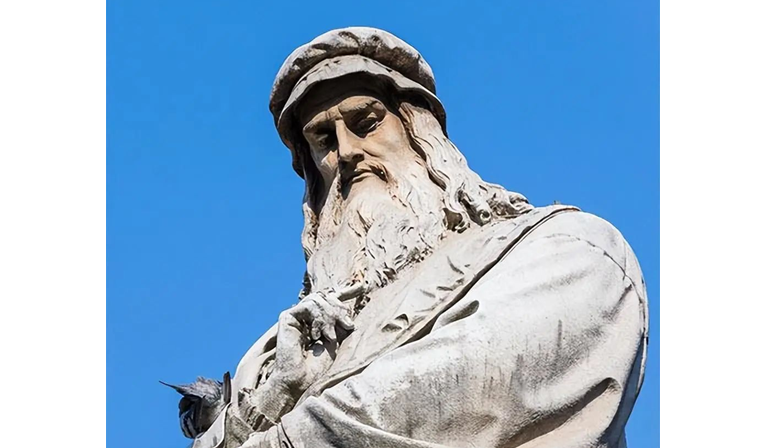Leonardo da Vinci is the "Father of Bearings"?
Bearings are tools that reduce friction and enable objects to move smoothly (easily). So, when were bearings born, how did they evolve, and how did they become popular? In this lecture, we will introduce the unexpected history of bearings.
Statue of Leonardo da Vinci in Piazza della Scala, Milan

1. Did bearings originate before the Common Era?
In ancient times, humans came up with many ways to reduce friction. Let's talk about the example of building the Egyptian pyramids.
The huge pyramids built by the accumulation of huge "heavy stones" have shocked countless people around the world. So, how did the ancients move the "heavy stones"? People have roughly guessed the answer through the murals of ancient Egypt.
Many murals in ancient Egypt depict the construction of the pyramids. Among them, some murals show the scene of people rolling logs under the "heavy stones" to move them. This can be inferred that the ancient Egyptians reduced friction by rolling logs and moved the "heavy stones" with less force.
This method of transportation is similar to the idea of using rolling elements (rollers) in bearings.
Although the records of human efforts to reduce friction are different in time and method, they can be found all over the world. From this, we can see how important it was to "transport objects smoothly by reducing friction" in human history.
2. Was the bearing with a cage invented by Leonardo da Vinci?
Leonardo da Vinci was a genius artist in Italy during the Renaissance. He had a deep connection with bearings and it is not an exaggeration to call him the "father of modern bearings."
Leonardo da Vinci, who had a strong curiosity about everything, had made great achievements in the field of mechanical design. In his manuscripts (creation records), there are drafts of the design of bearings that are indispensable in machinery. He created a bearing structure that can greatly reduce friction with unparalleled creativity.
This structure is a device that sandwiches a rolling ball (rolling element) between two upper and lower discs (raceway rings). Surprisingly, the bearing depicted in this design draft also has a "cage" to prevent the rolling balls from contacting each other.
This is almost exactly the same structure as the bearings used today.

A bearing with a cage restored by JTEKT technicians based on Leonardo da Vinci's design sketch
Therefore, the "basic structure of a bearing" consisting of a raceway ring, a rolling element ("ball" or "roller"), and a cage was invented about 500 years ago. The genius Leonardo da Vinci brought revolutionary evolution to bearings with his creativity. However, even if the basic structure of a bearing was invented, it was still not so easy to actually manufacture and mass-produce it. It was not until the Industrial Revolution that bearings were widely used in machinery.
3. The popularization of bearings began with the Industrial Revolution
During the Industrial Revolution from the mid-18th century to the 19th century, steel began to be mass-produced. As a result, high-strength steel bearings were mass-produced and began to be widely used in various fields. Among them, the "axle using bearings" is one of the great inventions born during the Industrial Revolution. The first invention was the ball bearing for bicycle axles, which used "balls" as rolling elements and became widely popular. After that, the ball bearing for carriage axles, which used "rollers" as rolling elements, was also born.
The advent of "axles using bearings" greatly improved the efficiency of movement and transportation.
Therefore, many industrial machines at that time also began to actively introduce bearings, making great contributions to the development of industrialization.
Through the Industrial Revolution, bearings became an important part that supported industrial development behind the scenes and became an indispensable tool in people's lives.
Summary: The history of bearing development is the history of human civilization progress
If there were no invention of bearings, humans would probably still be consuming great effort to carry heavy objects. And there would probably not be so many machines in our lives to provide us with convenient and comfortable services.
The birth and progress of bearings have had a huge impact on the development of civilization. It can be said that bearings are the crystallization of the wisdom and technology of our predecessors and are the heroes behind the "history of industrial development".


